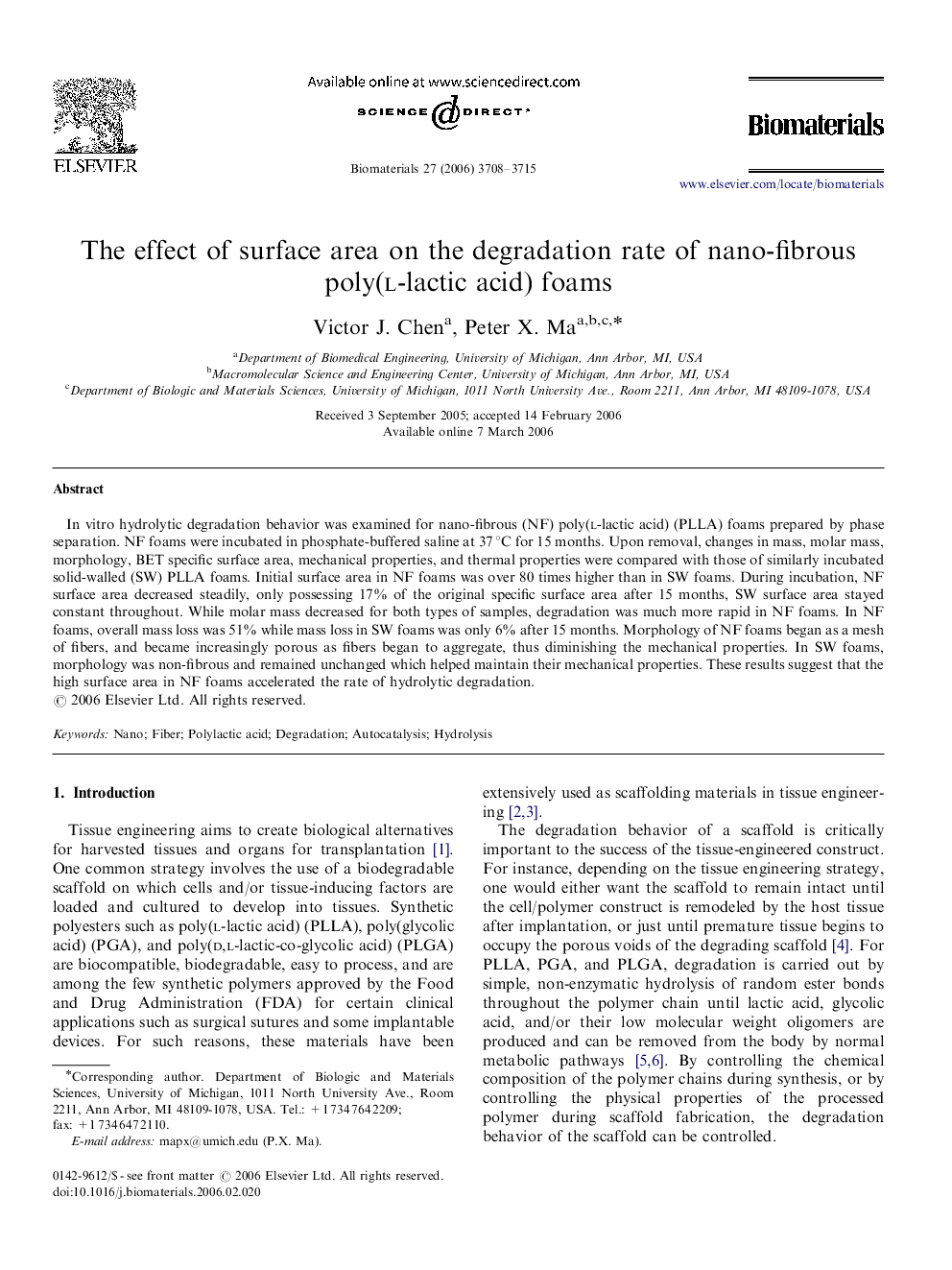| Article ID | Journal | Published Year | Pages | File Type |
|---|---|---|---|---|
| 11486 | Biomaterials | 2006 | 8 Pages |
In vitro hydrolytic degradation behavior was examined for nano-fibrous (NF) poly(l-lactic acid) (PLLA) foams prepared by phase separation. NF foams were incubated in phosphate-buffered saline at 37 °C for 15 months. Upon removal, changes in mass, molar mass, morphology, BET specific surface area, mechanical properties, and thermal properties were compared with those of similarly incubated solid-walled (SW) PLLA foams. Initial surface area in NF foams was over 80 times higher than in SW foams. During incubation, NF surface area decreased steadily, only possessing 17% of the original specific surface area after 15 months, SW surface area stayed constant throughout. While molar mass decreased for both types of samples, degradation was much more rapid in NF foams. In NF foams, overall mass loss was 51% while mass loss in SW foams was only 6% after 15 months. Morphology of NF foams began as a mesh of fibers, and became increasingly porous as fibers began to aggregate, thus diminishing the mechanical properties. In SW foams, morphology was non-fibrous and remained unchanged which helped maintain their mechanical properties. These results suggest that the high surface area in NF foams accelerated the rate of hydrolytic degradation.
